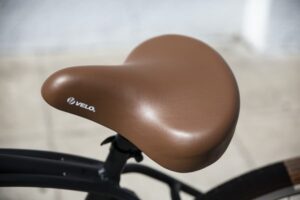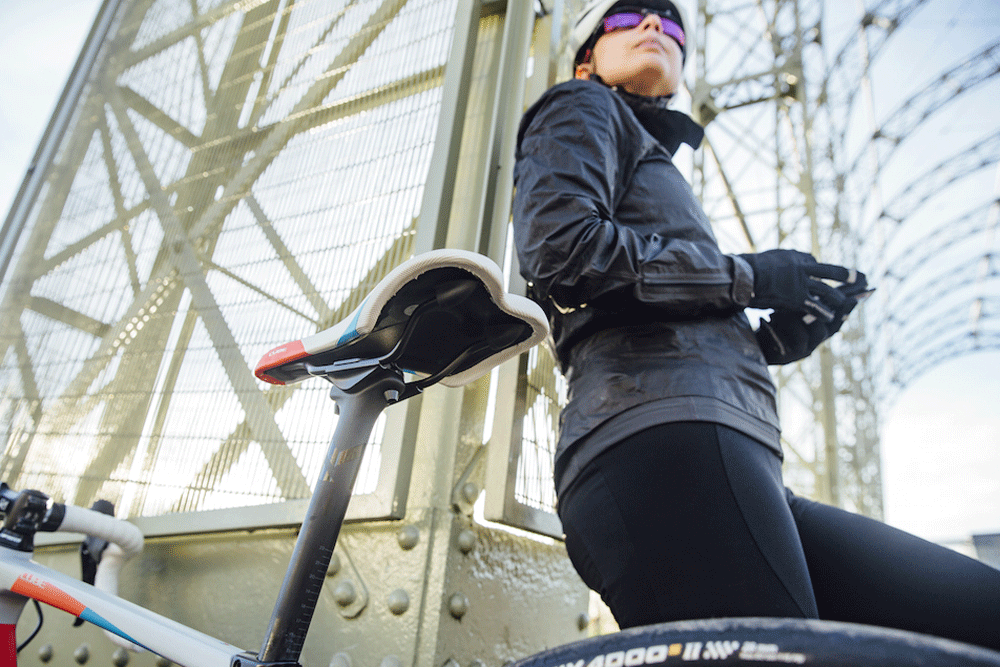How to Adjust Bike Saddle Height
Changing the saddle height on road-bike is a simple adjustment to make and can arguably bring more benefits. Finding the right saddle height can improve your peddling efficiency, enhance your ride comfort as well as help in avoiding long-term injuries. Therefore, it is crucial to find your optimal position with the main factors affecting the saddle height.
The saddle height is measured from the bottom bracket to the saddle top including the cleat position, saddle setback and crank length. Acquiring a correct saddle height is the perfect beginning point for any bike fit. The trick is achieving a balance between power and comfort.
How to Set Saddle Height
Three important measurements will help you to differentiate between a good, better or the best position possible. These measurements are saddle height, tilt and fore/aft.
How to Determine Your Bike’s Saddle Height
The bicycle seat height measurement is done from front to back and then identify a midpoint, mark the point with chalk or pen.
How to Determine Your Fore/aft Position
Saddle fore/aft is an important consideration when you are adjusting your saddle height. This bears an important bearing on your comfort and efficiency. The following are steps to determine the fore/aft position:
- Put your bike against the wall, whether with the wheel in it or a stationary trainer, making sure it is perpendicularly vertical to the wall.
- Take measurements for the wall to the bottom bracket, wall to the saddle tip, and get the saddle setback by deducting wall to bottom measurements from the wall to saddle tip measurements.
Crank Length
Crank length is a factor to consider when setting your saddle height. Crank length can be a measure used to influence other factors of a bike fit, for example, when you use a short crank it can open up the hip.
The crank length should also reflect the saddle height and it does not affect the power output at all.
 How to determine the saddle tilt: Most seats have contours. Therefore, the best way to get steady results is to measure the whole seat tilt. Put a piece of paper or board over the seat to get the overall seat tilt by using a smartphone or inclinometer.
How to determine the saddle tilt: Most seats have contours. Therefore, the best way to get steady results is to measure the whole seat tilt. Put a piece of paper or board over the seat to get the overall seat tilt by using a smartphone or inclinometer.
How to get the best saddle height: Once you have the three measurements of saddle height, fore/aft and tilt, it is time to get going. The following are methods that help to determine the bike seat height adjustment for a comfortable ride;
Determining the saddle height with the Heel Method
This method is the most common way that cyclists use to find their saddle height. It might not take into account all the elements, which can affect saddle height. It will provide you with a saddle height guide.
The Heel method involves sitting on the bike whether in a turbo trainer or leaning against a wall. Place your heel on the pedal. Then pedal backwards to get to the six o’clock position ensuring that your knee is completely straight.
If the knee still bends, you need to increase your height by adjusting small increments at a time. If your heel cannot touch the pedal then you might need to lower your saddle.
Determining the saddle height using the LeMond method
LeMond method popularized by Greg LeMond together with his coach in the 1980s involves using a flat object such as a meter ruler. Place it in between your legs as you apply little pressure to the groin in the same way as a saddle. Make sure your shoes are off and measure from the floor to the crotch. This will give you inseam measurements.
You may need help from someone or you can mark the wall with a meter ruler. Multiply the figure obtained from the measurement by 0.883 and this will give you your saddle height. However, this figure does not factor in things like poor flexibility or longer leg torso.
The 109 percent Method
There is another method of LeMond variation known as 109 percent. This uses the same measurements but multiplies the figure obtained by 109 percent. Take the figure as the saddle height measurement, measuring from the saddle top to the pedal spindle when your crank arm is at 6 o’clock position.
LeMond and 109 percent of methods do not take into account the individual nuances. Instead, the dynamic methods of instituting saddle height such as recording the rider’s knee angle and your ankle when peddling during a bike fit can give accurate results.
The Holmes Method
This method is more precise because the way you place your feet on the pedal is taken into account. According to this method, the right knee angle is between 25 to 35 degrees. This is the angle difference between your lower and upper leg when your pedal is at the lowest position. You need a friend or a turbo trainer to film you.
Place your bike on the turbo trainer and start riding. Let someone film you from the side while riding on the turbo trainer. Record this for some minutes. Have a look at the recording and pause the moment your pedal is at the lowest position. Then use a set-square to measure the angle.
If you find the angle is larger than 35degrees then you have to raise your saddle. If it is smaller than 25 degrees, then your saddle has to be reduced a bit.
 How to Use an App to Determine your Saddle Height
How to Use an App to Determine your Saddle Height
This is a similar way to the Holmes method. In this method, a stationary trainer is of necessity to get a proper evaluation. Find an app that can create steady images from the action. Ride your bike for a few minutes just like in any daily routine. Adjust your seat position until it feels completely comfortable.
Capture images to be able to count the number of times your knee bends throughout the pedal stroke and find the location of the centre of the knee. Then find the approximate centre of your knee.
If it is behind, slide your seat forward until the pedal axle is vertically in line with the centre of the knee. Notice any changes when moving back and forth. When you move the seat forward and it moves your knee forward, you may need to raise your seat too. It is important to keep trying this until you finally find a balanced and smooth feeling.
The saddle setback (the horizontal position)
When you are determining the saddle height, it is important to check whether your knee is not too far back or forward. You can move most saddles back or forward or can tilt it with one or two screws at the bottom. You use a plump line while determining the correct setback.
The following are the steps to follow:
- Sitting on your back, bring the bike’s pedals in a horizontal position.
- Lower the plump line over the front over the knee of the leg front.
- Hold the plump line just above the knee. Let the plump line fall right through the axle of the pedal. When it is far forward, move it back and if the line is too far back then you should position the saddle forward.
Saddle adaptations according to different problems:
Generally, the saddle is set horizontally. However, when you are suffering from a specific problem you could consider changing your saddle height and setback.
If you are suffering from back pain, then your saddles could be far forward. If there is a problem with your hand during cycling, there could be a wrong saddle position or are positioned too far forward
Are you suffering from any problem with your wrist hands and shoulders and might have to tilt your saddle a bit?
The following are a few tips to adjust the seat height and position yourself to suit you:
- If your hips are moving from side to side while riding, then your saddle is too high. This is clear to someone behind you while you are riding.
- When you are raising your saddle, increase the size bit by bit while going for a ride with every increase to ensure you find the position which feels comfortable for you.
- However, if you have serious problems, or cannot achieve results after several trials then it is time to talk to a professional.
- Visit a bike fitting centre because your body position will be analyzed in detail and your bike will be set accordingly.
Conclusion
If you have not found comfort after adjustments, keep moving around. Your body will eventually adapt to the new position. Keep on exercising but avoid extremes.
Saddle height is a great factor to consider for peddling comfort and efficiency. The information will give you an ultimate guide to determine the correct saddle or seat height on a bicycle.
It focuses on setting saddle height for road bikes, mountain bikes, or any other bike.it will provide a good point for setting your bike correctly saddled up. Your lifestyle off the bike, the way you move while riding on your bike and the self-care type you engage in, dictates how you sit and pedal your bike.

